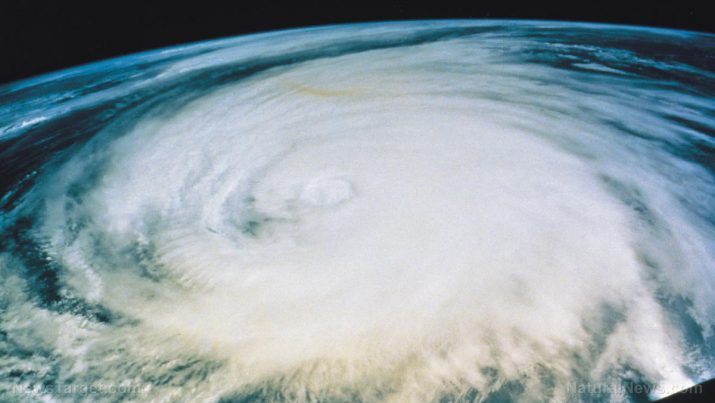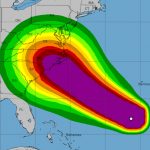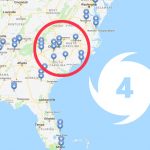
As Hurricane Florence approaches the East Coast, these should be the top preparation priorities for residents
Tuesday, September 11, 2018 by JD Heyes
http://www.nuclear.news/2018-09-11-hurricane-florence-approaches-east-coast-preparation-priorities.html

Once again, Mother Nature is about to teach a large segment of the country how important advanced planning and preparation is when it comes to dealing with disaster and emergency situations.
Hurricane Florence is on a path to strike North and South Carolina, with the latest weather forecasts claiming that the storm will make landfall somewhere near the port city of Wilmington, North Carolina. The National Hurricane Center reports that Florence, for now, is a Category 4 with 140 mile-per-hour winds:
Life-threatening, catastrophic flash flooding and significant river flooding is possible over portions of the Carolinas and Mid-Atlantic states from late this week into early next week, as Florence is expected to slow down as it approaches the coast and moves inland.
So, not only do residents (those who remain) have the actual storm itself to worry about, with its high winds and rain, but also lots of flooding is expected as Florence pushes inland.
The most important preps
If you’re planning to “bug out” to a safer environment away from the storm’s path, you should leave immediately. Keep in mind, however, that roads and highways are likely already packed, so be prepared for slow going. Stay calm and just go with the flow of traffic. Have a destination in mind before you leave.
Here’s a last-minute checklist:
— Ensure you have your prescription medications if you take any.
— Pack enough clothing for several days.
— Make sure to bring a laptop, if you have one, so you can stay informed about the latest storm information.
— Bring along something for self-defense, as you never know whether the situation on the ground could suddenly worsen. (Make sure to follow all federal, state, and local laws regarding self-defense weapons.)
— Put some emergency rations in your vehicle as well as a supply of water for everyone.
— If you live along the coast, you should definitely not stay unless you just don’t have any other choice.
One additional factor to consider regarding this particular storm: There are nuclear power plants in Florence’s pathway, meaning it’s possible that they could be damaged and there could be an accidental release of radiation like there was at the Fukushima plant in northern Japan in March 2011 following an earthquake-induced tsunami. Air currents generally flow west-to-east, meaning that any radioactive clouds will most likely be blown northeasterly into the Atlantic. But with air currents altered by the storm, some radiation could be circulated inland as well before being rerouted out to sea.
The Federal Emergency Management Agency, or FEMA, notes the dangers of hurricanes:
Hurricanes are massive storm systems that form over warm ocean waters and move toward land. Potential threats from hurricanes include powerful winds, heavy rainfall, storm surges, coastal and inland flooding, rip currents, tornadoes, and landslides.
How to prep:
— If you are in the storm’s path and you have to remain there, find safe shelter without delay.
This could be in the form of a designated storm shelter or in an interior room of your home.
— Keep a portable radio handy for emergency information and alerts. You may not be able to rely on having cell service. (Related: Be smart, stay safe: Your primer to shutting off utilities in case of an emergency.)
— Avoid walking or driving through areas that have flooded; you don’t know anything about terrain you can’t see.
— Have a plan in mind if, for some reason, you have to evacuate quickly. Know where you’re going.
— Make sure you have at least 72 hours’ worth of food and water on hand.
— Collect your important documents and find a safe place for them. You can also create password-protected digital copies.
— Protect your property by removing clutter from drains and gutters. Consider installing plywood to protect your windows.
— Make sure you have something with which you can defend yourself in Florence’s aftermath (and make sure it complies with all applicable laws).
— Keep a TV or radio on at all times for updates and storm alerts.
Read more about natural disasters at Disaster.news.
Sources include:
Tagged Under: Tags: bugout, disaster, Flooding, food, heavy rain, high winds, Hurricane Florence, North Carolina, nuclear, nuclear fallout, off grid, preparations, preparedness, prepping, south carolina, storm shelter, storm surge, survival, Virginia, water





